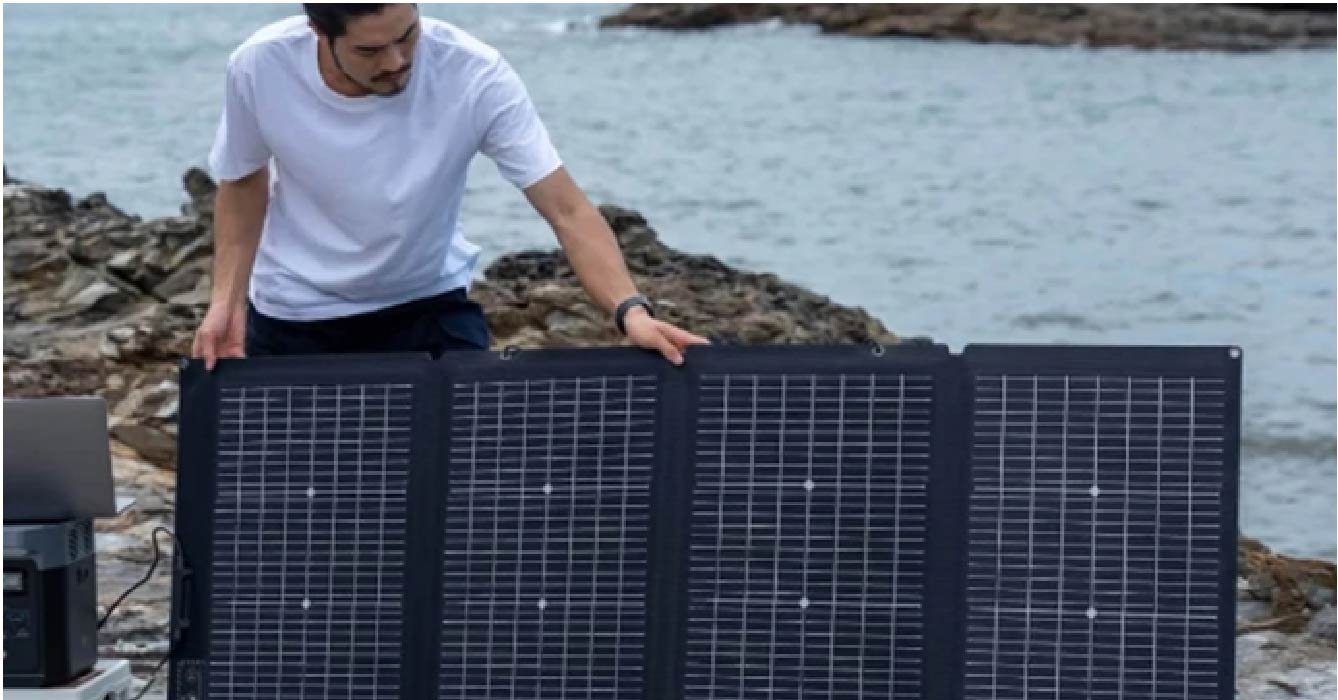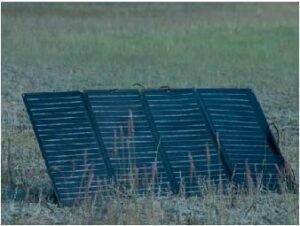Technology
How to Position Portable Solar Panels for Fastest Charging

Sunlight is the key to efficient solar charging, but not all sunlight is equal. The way you position your portable solar panel directly impacts how quickly it charges your devices. A poorly angled panel may only capture a fraction of the available energy, leaving you waiting longer for a full charge. Whether you’re camping, traveling, or preparing for emergencies, knowing how to optimize your solar panel’s position can save you time and frustration. In this article, we’ll explore practical tips to help you get the fastest charging speeds from your portable solar panel.
How Does Solar Panel Angle Affect Charging Speed?
The angle of your solar panel determines how directly it faces the sun, which directly affects charging efficiency. When sunlight hits the panel at a 90-degree angle, it delivers the most energy. Tilting the panel too far away reduces the amount of light it captures. For example, if you place a solar panel flat on the ground during midday, it won’t perform as well as one tilted toward the sun. A simple way to find the best angle is to match your latitude. Some portable solar panels come with adjustable stands, making it easy to change the angle as needed. If yours doesn’t, propping it up with a backpack or rock can help. Another factor is the sun’s movement. The optimal angle changes throughout the day, so adjusting your panel every few hours can improve charging speed.
Where Should You Place Your Portable Solar Panel?
Best Locations for Maximum Sun Exposure
Choosing the right spot for your solar panel is just as important as setting the correct angle. Open, unobstructed areas like rooftops, fields, or even car hoods are ideal because they receive direct sunlight. If you’re camping, avoid placing the panel under trees or near tall objects that cast shadows. Even a small shadow can drastically reduce charging efficiency because solar panels operate in series—shading one cell affects the entire panel’s output. When setting up at home, south-facing locations (in the Northern Hemisphere) get the most consistent sunlight. A balcony, garden, or driveway can work well if it’s free from obstructions. If you’re on the go, a portable solar panel can be mounted on a backpack or placed on a sunny rock while hiking. The key is to ensure the panel stays in direct sunlight for as long as possible.

Avoiding Shade and Obstructions for Better Efficiency
Shadows are a solar panel’s worst enemy. Even partial shading—like from a tree branch or a nearby building—can cut power output by 50% or more. To test for shade, observe the panel’s location at different times of day. Morning shadows may not be an issue, but afternoon ones could block critical charging hours. If you’re in a shaded area, try relocating the panel every few hours. Some users attach their panels to adjustable poles or tripods to keep them above obstacles. Reflective surfaces, like light-colored walls or water, can also help by bouncing additional sunlight onto the panel. Just avoid overheating—direct sun is best, but reflected light can provide a small boost in shaded conditions.
What’s the Best Time of Day for Solar Charging?
Peak Sunlight Hours and Their Importance
Solar charging is most effective during “peak sun hours”—typically between 10 AM and 4 PM, when the sun is highest in the sky. During these hours, sunlight is more intense, allowing your panel to generate maximum power. For example, a one-hour charge at noon can produce twice as much energy as the same panel in the early morning. If you rely on solar power, plan your charging around these peak times. Set up your panel before 10 AM and leave it in place until late afternoon for the best results. Some portable power stations store energy, so you can charge them during peak hours and use the power later.
How Weather Conditions Impact Charging Speed
Cloudy days reduce solar efficiency, but panels still work—just slower. On overcast days, expect about 10-25% of normal output. Rain further decreases performance, though some light can still penetrate thin clouds. If bad weather is forecast, charge your devices early or use a battery bank to store energy in advance.
Temperature also matters. Contrary to popular belief, extreme heat can lower efficiency. Solar panels work best in moderate temperatures (around 25°C/77°F). In hot climates, elevate the panel slightly to allow airflow underneath, which helps keep it cool.
Pro Tips to Maximize Solar Panel Charging Efficiency
Using a Solar Tracker vs. Manual Adjustments
Solar trackers automatically adjust the panel’s angle to follow the sun, boosting efficiency by up to 25%. However, they’re expensive and less practical for portable setups. For most users, manual adjustments every few hours are a cost-effective alternative. If you can’t adjust the panel frequently, position it to face the sun’s average path. In the Northern Hemisphere, tilting it southward ensures decent exposure all day. A compass app can help find the right direction.
Cleaning and Maintaining Your Solar Panel
Dust, dirt, and fingerprints block sunlight, reducing efficiency. Wipe the panel gently with a microfiber cloth and water every few uses. Avoid harsh chemicals that could damage the surface. Regular maintenance ensures your panel operates at full capacity. Check cables and connections for wear, especially if you travel often. A loose wire can interrupt charging even if the panel is perfectly positioned.
Conclusion
Proper positioning turns a good solar panel into a great one. By adjusting the angle, avoiding shade, and charging during peak sunlight hours, you can significantly boost efficiency. Small changes—like cleaning the panel or relocating it every few hours—make a big difference over time. For reliable performance, choose a high-quality portable solar panel from a trusted brand. EcoFlow, for example, offers durable panels with excellent efficiency and customer support. With these tips, you’ll get the fastest, most efficient charging from your portable solar panel—no matter where you are.
For More Information Visit Coopermagazine
-

 Celebrity1 year ago
Celebrity1 year agoWho Is Jennifer Rauchet?: All You Need To Know About Pete Hegseth’s Wife
-

 Celebrity1 year ago
Celebrity1 year agoWho Is Mindy Jennings?: All You Need To Know About Ken Jennings Wife
-

 Celebrity1 year ago
Celebrity1 year agoWho Is Enrica Cenzatti?: The Untold Story of Andrea Bocelli’s Ex-Wife
-

 Celebrity1 year ago
Celebrity1 year agoWho Is Klarissa Munz: The Untold Story of Freddie Highmore’s Wife
















